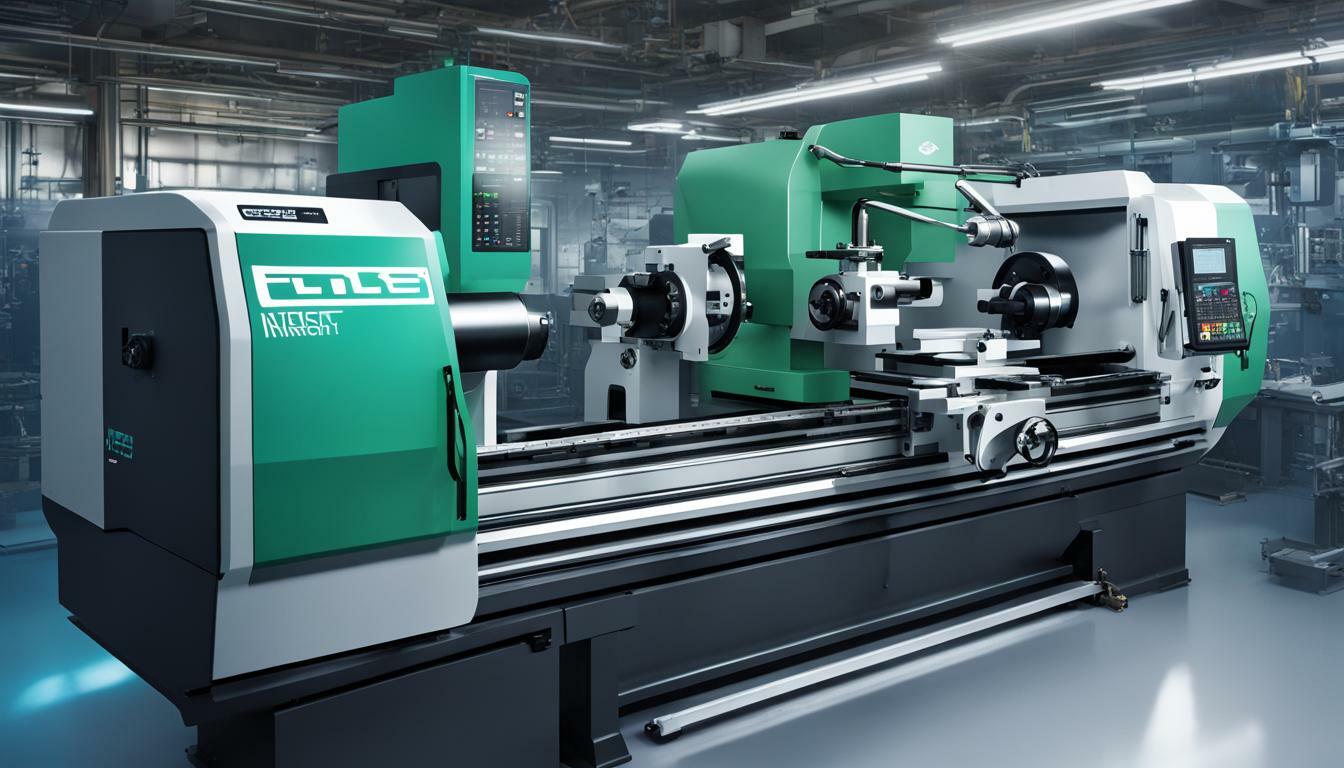
If you’re a lathe operator, you know how important it is to achieve precision in your work. That’s where a steady rest for lathe comes in. This essential tool serves as a lathe support device for the spindle and tool, providing stability and reducing vibrations, which are key factors in guaranteeing precision and accuracy in your lathe work.
Not only does a steady rest help boost precision, but it also improves efficiency and craftsmanship, allowing you to undertake more intricate designs that require enhanced metal turning support. We’ll explore these benefits and more in this essential guide to steady rests for lathes.
Key Takeaways
- Steady rests are essential support devices for a lathe spindle and tool.
- They enhance stability and reduce vibrations, ensuring precision and accuracy in lathe work.
- A steady rest can improve efficiency and craftsmanship, allowing you to undertake more intricate designs that require enhanced metal turning support.
Choosing the Right Steady Rest for Your Lathe
If you’re serious about achieving precision in your lathe work, a steady rest is an essential accessory to have. But with so many options available, how do you choose the right one for your lathe machine? In this section, we’ll provide insights into what to consider when selecting a steady rest and highlight the significance of a reliable lathe chuck support.
Factors to Consider
The size and capacity of the steady rest are crucial in determining its compatibility with your lathe machine. It’s important to choose a steady rest that can accommodate the size and weight of your workpiece. Additionally, the type of lathe work you primarily undertake will influence your selection. Certain types of steady rests are better suited for specific jobs, such as threading or turning long workpieces.
Types of Steady Rests
There are various types of steady rests available as metalworking accessories. The most common types are the three-point, four-point, and roller-type steady rests. The three-point steady rest provides support for a workpiece using three contact points, while the four-point steady rest uses four. Roller-type steady rests use rollers rather than points of contact to stabilize the workpiece, making them better suited to cylindrical workpieces.
The Importance of a Reliable Lathe Chuck Support
The lathe chuck support is an integral component of a steady rest, providing additional stabilization to the workpiece. It’s important to ensure that the chuck support is compatible with your lathe machine and that it’s constructed of quality materials to withstand repeated use. A reliable chuck support will help prevent slippage and unwanted movement of the workpiece, resulting in improved accuracy and precision.
Choosing the right steady rest and chuck support for your lathe machine is essential to achieving high-quality and precise lathe work. Take the time to consider the factors discussed above and invest in quality metalworking accessories to enhance your lathe performance.
Benefits of Using a Steady Rest for Lathe
A steady rest for lathe is a vital support device that enhances the accuracy and finish of your metal turning projects. It provides a stable support for the lathe spindle and tool, minimizing vibrations and improving overall stability. Using a steady rest in your lathe work offers numerous benefits that aid in achieving optimal results.
One significant advantage of a steady rest is improved metal turning support. The steady rest holds the workpiece firmly in place, ensuring that it remains stationary during the turning process. This makes it easier to machine intricate designs with precision and accuracy. Additionally, a steady rest also enhances the safety of your lathe work by reducing the risk of accidents or damage to the machine and workpiece.
Another benefit of utilizing a steady rest is the machining tool rest it provides. A steady rest helps to distribute the load evenly over the workpiece, minimizing tool chatter and unwanted vibrations. This ensures that the turning process is smoother, reducing the likelihood of defects in the finished workpiece. By offering stable support, a steady rest allows for consistent cuts and boosts the efficiency of your lathe work.
In summary, a steady rest is a crucial accessory for any metal lathe work. Its ability to offer a stable support helps to reduce vibrations and improve the accuracy and finish of your work. By enhancing metal turning support and acting as a machining tool rest, a steady rest allows for consistent and efficient cuts, ensuring optimal results.
Utilizing a Steady Rest – Tips for Optimal Performance
When it comes to using a steady rest for lathe work, proper installation and setup are crucial for optimal performance. Here are some tips to help you get the best results:
- Positioning: Place the steady rest as close to the cutting tool as possible, while still allowing room to maneuver. This will provide the most support and stability for your lathe tool.
- Alignment: Make sure the steady rest aligns perfectly with the centerline of the lathe, and that the jaws are evenly spaced around the workpiece. This will help reduce vibrations and prevent damage to the workpiece.
- Pressure: Adjust the pressure of the jaws so that they are snug against the workpiece, but not so tight that they deform or mark it. This will ensure the workpiece remains secure and stable while being machined.
It is also essential to ensure smooth operation of the steady rest during lathe work. Avoid any sudden movements, and monitor the level of pressure being applied to the workpiece. Excessive force can damage the tool and lead to inaccurate results.
Proper maintenance and care of the steady rest are equally important for optimal performance. Regularly clean the jaws and base, and inspect for any signs of wear or damage. Lubricate moving parts as needed, and tighten any loose screws or bolts. By following these guidelines, you can extend the lifespan of your steady rest and maintain its efficiency as a lathe support device.
Conclusion
In conclusion, utilizing a steady rest for lathe work is an essential tool for achieving precision, efficiency, and enhanced craftsmanship. The use of a steady rest provides stability and reduces vibrations, improving metal turning support, assisting in machining intricate designs, and enhancing the accuracy and finish of your work.
When selecting the ideal steady rest for your lathe, consider the size and capacity, compatibility with your lathe machine, and the type of lathe work you primarily undertake. Ensure proper installation, setup, and positioning to optimize support and operation.
Regular maintenance and care guidelines are necessary to extend the lifespan of the steady rest and maintain its efficiency as a lathe support device.
Elevate your lathe work by incorporating a steady rest for optimal performance and reducing the risk of accidents or damage to the machine or workpiece. Invest in the essential tool of a steady rest for lathe work and achieve precision, efficiency, and enhanced craftsmanship.
FAQ
Q: What is a steady rest for a lathe?
A: A steady rest is a support device used in lathe work to enhance precision and reduce vibrations. It provides stability for the lathe spindle and tool, allowing for efficient and accurate machining.
Q: How does a steady rest function?
A: A steady rest is positioned around the workpiece and clamped onto the lathe bed. It holds the workpiece firmly in place, minimizing deflection and ensuring smooth rotation, resulting in improved craftsmanship and enhanced finish.
Q: Why is using a steady rest important?
A: A steady rest is essential in achieving precision in lathe work. It enhances stability, reduces vibrations, and minimizes the risk of accidents or damage to the lathe machine or workpiece. It is particularly beneficial when working on long or slender workpieces.
Q: How do I choose the right steady rest for my lathe?
A: When selecting a steady rest, consider factors such as the size and capacity of the steady rest, compatibility with your lathe machine, and the type of lathe work you primarily undertake. It is important to choose a reliable lathe chuck support that meets your specific requirements.
Q: What are the benefits of using a steady rest for lathe work?
A: Incorporating a steady rest improves metal turning support, enables machining intricate designs, enhances the accuracy and finish of your work, and enhances overall safety by reducing the risk of accidents or damage.
Q: How can I optimize the performance of a steady rest?
A: To achieve optimal performance, ensure proper installation and setup, position the steady rest for optimal support, and follow maintenance and care guidelines. Regular maintenance and proper usage will help extend the lifespan of the steady rest and maintain its efficiency as a lathe support device.
- Delta Midi Lathe 46-250 Performance - August 27, 2023
- Understanding the Different Parts of a Lathe Machine - August 27, 2023
- Explore Different Lathe Tool Holder Types for Your Projects - August 27, 2023
